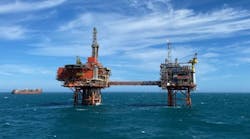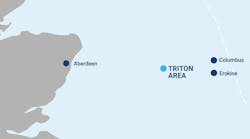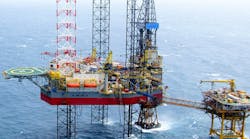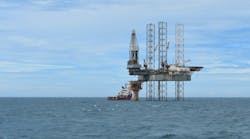Offshore staff
EDINBURGH, UK – Wood Mackenzie estimates that 100 tcf of gas has been discovered in Mozambique and Tanzania to date, making the offshore Rovuma basin one of the world’s most prolific conventional gas plays.
However, technical and commercial challenges have to be addressed in order to bring the gas to market by the end of this decade. These include infrastructure, government capacity, financing, and unitization discussions.
Martin Kelly, Wood Mackenzie’s head of Sub-Sahara Upstream Research, said: “We estimate yet-to-find reserves could be as much as 80 tcf in Mozambique and 15 tcf in Tanzania. There is clearly plenty of gas to supply the likely commercialization route of LNG - theoretically enough to support up to 16 LNG trains.
“The Rovuma basin is the most prolific in the region…with 85 tcf discovered so far. Globally in 2011, it yielded the third most hydrocarbons, and we expect it to top the list in 2012, if the first half of the year is anything to go by.”
In neighboringTanzania, targets are the northern extension of the Rovuma basin and the Mafia basin. Kelly says: “The average discovery size is much smaller at around 2 tcf, compared to Mozambique which is over 7 tcf. Discoveries in Tanzania are also more spread out, so developing them will be more expensive than those in Mozambique because additional infrastructure will be required.”
For Mozambique, there is also the question of unitization. “Of the 85 tcf of gas discovered to date in Mozambique, around half is thought to be one enormous field which is in communication across the block. Under Mozambican law, a unitization agreement between the operating parties will be required.”
Although there is a risk that these discussions could delay final investment decision and therefore LNG production, there are other discoveries contained wholly within offshore Area 1 and Area 4, and gas could be developed here first.
Giles Farrer, senior LNG research analyst for Wood Mackenzie, added: “The region’s remoteness and lack of development present serious technical obstacles. There is virtually no existing skilled workforce, and both Mozambique and Tanzania will have to build and establish deepwater ports capable of servicing the needs of the petroleum sector.
“On the commercial side, there is the question of government capacity - whether there is sufficient impetus and capability within the governments and national oil companies to advance the huge legislative, bureaucratic, customs, and financial challenges that such a development would bring.
“The major outstanding milestone for Mozambique is the conclusion of a commercial framework agreement, which is in the process of being negotiated. It will determine how the LNG facility or facilities will be structured for the purpose of taxation and whether the joint ventures will co-operate in the construction of a single, mega LNG facility, or pursue individual developments. One crucial advantage that the Tanzanian projects enjoy is that they have already negotiated commercial terms, prior to the announcement of their projects.”
Farrer also highlighted finance. “We estimate that a two-train greenfield development in the region is going to cost at least $25 billion, and for some of the players involved financing their share of this sort of development cost will certainly prove challenging and could delay development.”
8/22/2012




